Hausa architecture
Hausa architecture is the architecture of the Hausa people.[1] Hausa architectural forms include mosques, walls, common compounds, and gates. Hausa traditional architecture is an integral part of how Hausa people construct a sense of interrelatedness with their physical environment.
Climatic factors
Hausa architectural is dependent on the local climate. Housing must be sustainable and protect people from bad weather. On the territory of the Hausa tribe, a dusty cold wind is observed in October-March. Humidity is low enough. Between March and October, there is a damp wind. On hot days, people tend to hide in the shade. In addition, they build tall houses always to have the opportunity to stay in shaded areas. The walls are high so that the hot air rises to the ceiling. Heavy cool air, on the contrary, is lowered providing the residents' comfort.
Religious factors
Since most Hausa people are muslims, they build their houses in large communities because they needed large areas for prayer, wedding celebrations, and funeral rituals. All this contributes to close communication between people. In addition, the peculiarities of architecture are influenced by the need for separation between women and men. The buildings in the yard are designed in such a way that it is possible to accommodate as many wives and children as possible and to provide space for everyone in the open air. A typical Hausa building consists of two parts. The inner zone is women restricted. The outer part is used for reception of man’s guests. In the external environment, there is often space for male dependents. Extended family settings are created for them. External reception rooms are needed not only to accommodate mourners and well-wishers. They also ensure the safety of the hosts.
Tubali
Tubali is the Hausa architectural style predominant in Northern Nigeria, Niger, eastern Burkina Faso, northern Benin, as well as some West African countries.[2]
Gallery
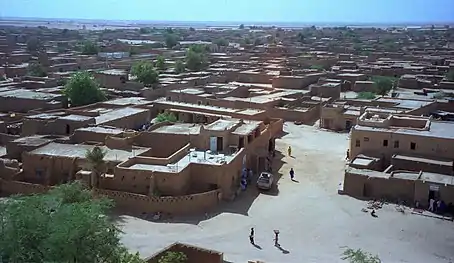
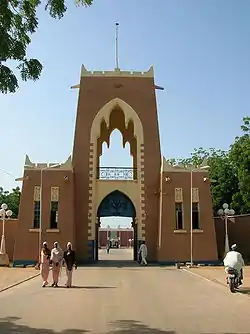 Gidan Rumfa in Kano
Gidan Rumfa in Kano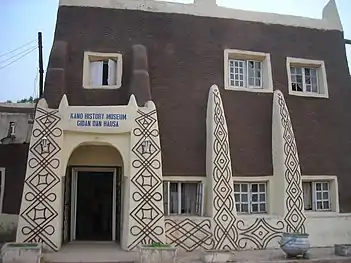 Kano Museum, an example of Hausa Tubali architecture
Kano Museum, an example of Hausa Tubali architecture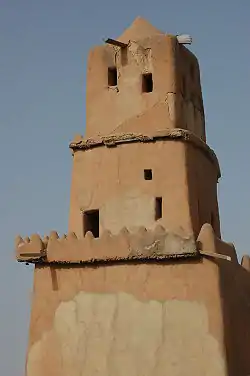
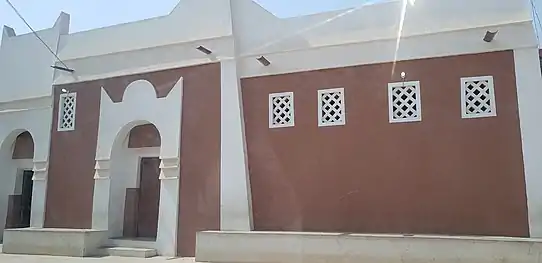 Hausa architectural painting and exterior design
Hausa architectural painting and exterior design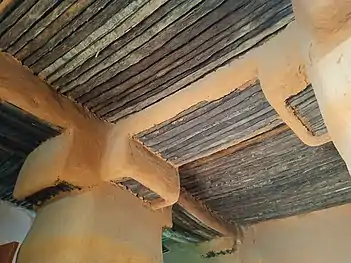 Roofing style
Roofing style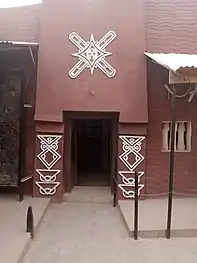 Entrance known as Zaure
Entrance known as Zaure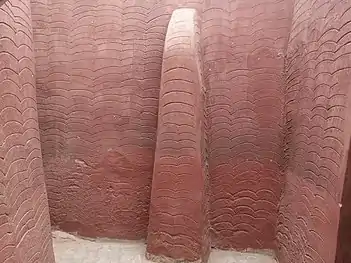 Simple pattern illustration in Walls
Simple pattern illustration in Walls
See also
References
- Umar, Gali Kabir; Yusuf, Danjuma Abdu; Ahmed, Abubakar; Usman, Abdullahi M. (2019-09-01). "The practice of Hausa traditional architecture: Towards conservation and restoration of spatial morphology and techniques". Scientific African. 5: e00142. doi:10.1016/j.sciaf.2019.e00142. ISSN 2468-2276.
- http://www.afropedea.org/hausa-architecture
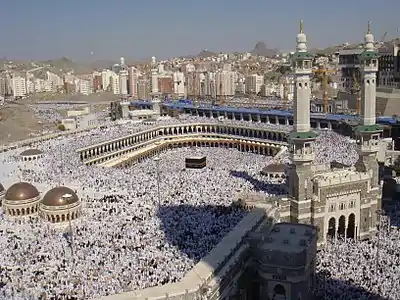
.jpeg.webp)
